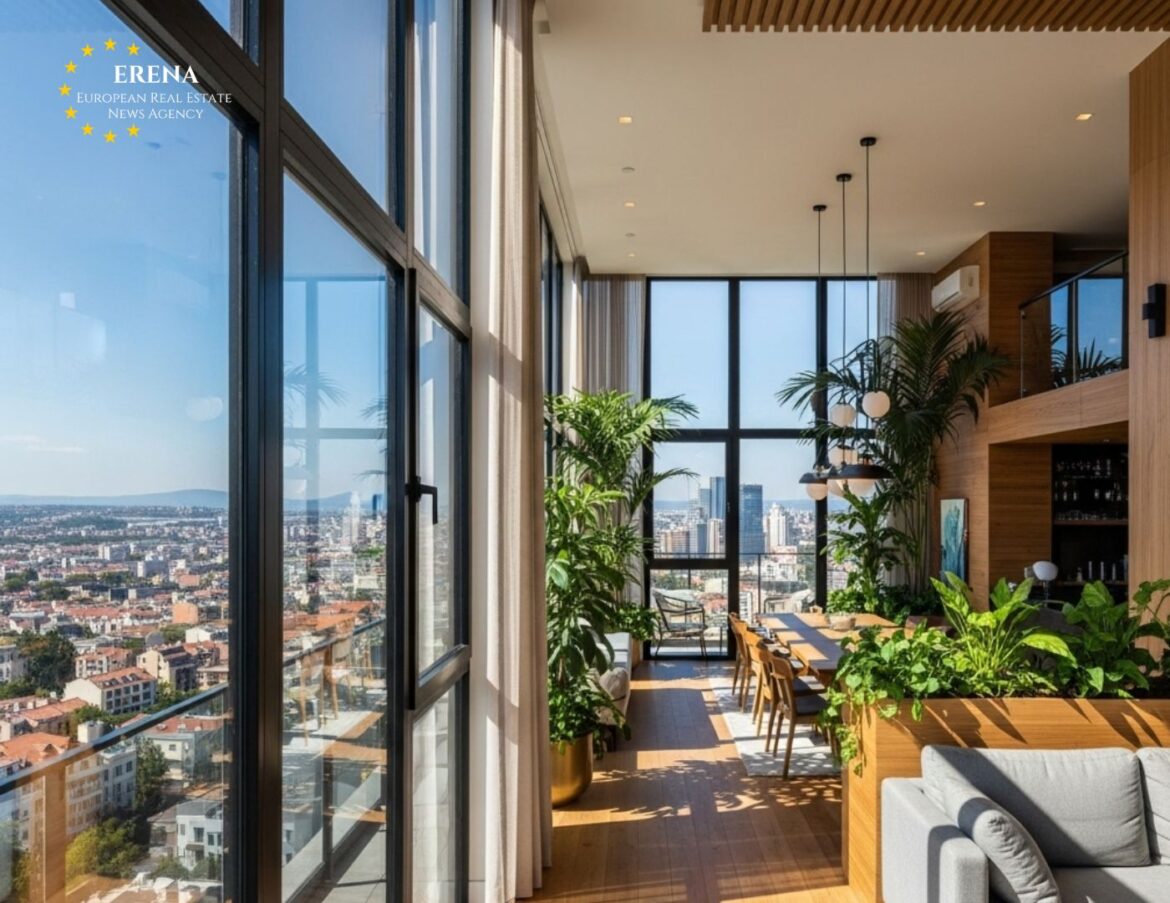In recent years, the global real estate industry has undergone a profound transformation. Aesthetic appeal, functionality, and sustainability are no longer treated as separate elements — they now converge in a single architectural philosophy: biophilic design. This emerging concept is redefining what luxury means in the residential sector. Today’s luxury homes are not just about marble finishes or panoramic windows; they are about forging deep, meaningful connections with nature to promote health, well-being, and a sense of serenity.
What Is Biophilic Design?
Derived from the Greek words “bios” (life) and “philia” (love), biophilic design refers to the architectural and interior design practice that incorporates natural elements and principles into built environments. It’s based on the idea that humans have an innate connection to nature, and living spaces that reflect this connection can enhance physical health, mental well-being, and emotional comfort.
Unlike green building practices that focus primarily on energy efficiency or environmental impact, biophilic design is centered on human experience — light, air, textures, rhythms, and natural forms that engage all the senses and foster a feeling of harmony.
Why the Luxury Market Is Embracing Biophilia
Luxury real estate is increasingly moving away from superficial extravagance and toward meaningful, experience-driven living. Today’s affluent buyers — especially Gen X and affluent millennials — seek homes that offer more than opulence; they demand environments that enhance wellness, calm the mind, and connect them with something larger than themselves.
In an age of rapid urbanization and high stress, nature has become a refuge. Biophilic design answers this need, transforming homes into holistic sanctuaries that combine elegance with health-centered living.
Key Features of Biophilic Design in High-End Residences
1. Natural Materials
Luxury homes are increasingly incorporating raw and tactile natural materials such as stone, wood, clay, wool, and linen. These elements are often left in their natural state — unpolished stone, exposed wood grains — to preserve their authenticity and provide sensory richness.
2. Living Greenery
Vertical gardens, indoor green walls, rooftop terraces, and central courtyards are becoming central features of luxury developments. Beyond aesthetics, these plants improve air quality, regulate humidity, and create natural privacy and tranquility within urban settings.
3. Daylight and Natural Ventilation
A hallmark of biophilic design is the prioritization of daylight. Expansive floor-to-ceiling windows, skylights, and thoughtfully oriented layouts ensure that natural light floods the interiors, adjusting mood and circadian rhythms.
Ventilation is also a critical component. High-end residences now feature intelligent airflow systems that mimic natural breezes, providing freshness and comfort without relying solely on mechanical cooling.
4. Water as a Sensory Element
Water features such as indoor fountains, reflecting pools, and natural-style swimming areas contribute not just beauty but soothing sounds and visual motion that calm the mind. The presence of water is deeply tied to human relaxation and contemplation.
5. Transitional Spaces
Biophilic design blurs the line between indoors and outdoors through terraces, verandas, sunrooms, and semi-open walkways. These in-between areas create a fluid spatial experience, allowing residents to engage with their environment throughout the day.
6. Smart Integration of Technology
Luxury developments are marrying technology with biophilic principles. This includes circadian lighting systems, automated plant care, natural soundscapes, and responsive climate control that adapts to the user’s biological needs — enhancing comfort without disrupting the natural feel of the space.
Market Adoption and Global Trends
Leading developers around the world are increasingly incorporating biophilic elements into luxury projects. The trend is especially prominent in countries such as Switzerland, the Netherlands, Portugal, and regions along the Mediterranean coast.
In Zurich, new high-end residences feature cascading balconies with built-in gardens, communal rooftop orchards, and forest-inspired landscaping. In Copenhagen, residential complexes are designed so that every apartment overlooks a green courtyard or a vertical forest.
On the French Riviera, ocean-view apartments now offer natural stone finishes, soft sandy color palettes, and integrated green spaces that evoke coastal ecosystems. Such properties command premium pricing — for example, biophilic residences in Geneva often range from €20,000 to €35,000 per square meter.
Health and Wellness Benefits
Scientific studies have shown that biophilic environments can reduce stress, improve cognitive function, support better sleep, and elevate overall well-being. In the luxury market, where many residents work in high-performance, high-pressure professions, these benefits are especially valued.
Homes designed with biophilia in mind are not simply spaces to inhabit — they become personal wellness retreats. Buyers are increasingly viewing such investments not only in terms of property value but as a long-term commitment to health and quality of life.
Sustainability and Responsible Living
Biophilic design also aligns with the growing demand for sustainable architecture. It emphasizes low-impact building materials, energy-efficient systems, water recycling, and integration with the natural landscape. This makes biophilic homes not only luxurious but also responsible.
As environmental consciousness continues to shape buyer preferences, developers who embrace biophilia position their properties as future-proof — both ethically and economically.
The Future of Luxury Living
The movement toward biophilic design is poised to become a permanent fixture in the world of high-end real estate. What began as an architectural philosophy is now a market standard, influencing how luxury homes are conceived, built, and experienced.
Looking ahead, biophilic principles may extend beyond penthouses and villas into broader residential planning, hospitality, and wellness-centered communities. Forward-thinking developers are already incorporating biophilic urbanism into large-scale projects, proving that nature-driven living is not a fleeting trend, but a profound lifestyle evolution.
Conclusion
Biophilic design is redefining luxury for the 21st century. No longer defined solely by material opulence or square footage, luxury now includes serenity, wellness, and ecological harmony. For discerning buyers, nature is not just a view — it is an essential part of how they live, work, and thrive.
As cities grow denser and technology more pervasive, the ability to come home to a natural, sensory-rich environment has become the ultimate privilege. Biophilic design offers not just a place to live, but a way to live well — making it the new gold standard in luxury real estate.

